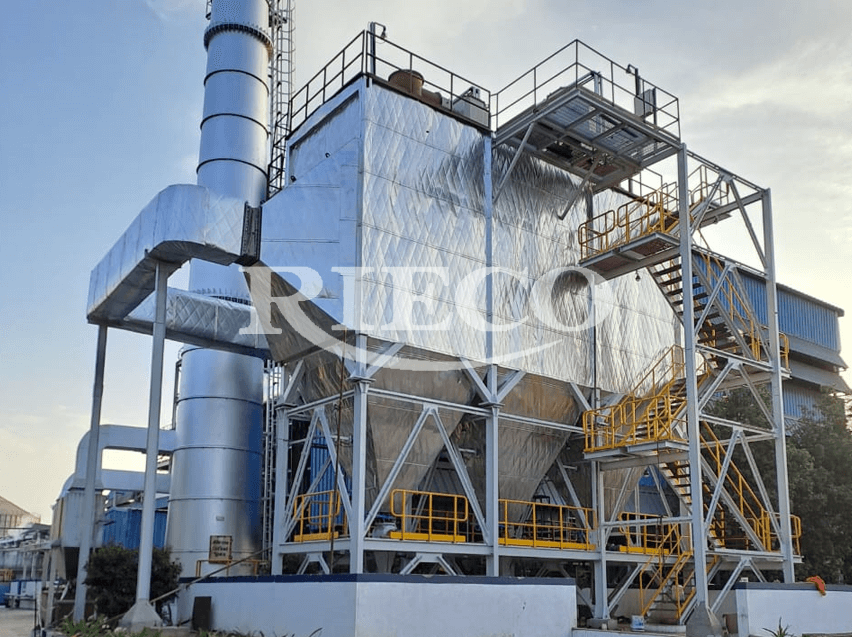Electrostatic Precipitators: 5 Reasons They’re Essential for Air Pollution Control

Electrostatic Precipitator

Air pollution control and environmental compliance have become key priorities in the industrial sector. Pollution and its adverse effects on the environment have considerably seen a rise, opening the door to a multitude of hazards. To curb this calamity, a technology is deployed for pollutant mitigation, known as Electrostatic precipitators (ESPs).
Electrostatic Precipitators capture high-efficiency particulate matter from industrial emissions and primarily vest their operations by utilizing electrical charges which assist in the elimination of pollutants. In this blog, we will dive into understanding what an Electrostatic Precipitator is and its principal benefits.
What is an Electrostatic Precipitator
An electrostatic precipitator’s key functioning resides in its ability to remove dust particles or pollutants from a gas stream by using electrical energy which charges the particles negatively or positively. Typically, an electrotactic precipitator constitutes four essential components which are gas distribution plates, discharge electrodes, collection surfaces and rappers. The contaminated air/gas travels through the precipitator coming in contact with the plates which impart them a static charge. Charged air or gas is guided to an oppositely charged plate, where pollutants are attracted and collected. After the pollutants completely cover the surface area of this plate, the rapping system employs its function to clean the designated area to ensure enough room for new pollutants to assemble.
5 Principal Benefits of an Electrostatic Precipitator
1. High Efficiency in Particulate Removal
One of the noteworthy advantages of an electrostatic precipitator is its exceptional ability to remove the finest particulate matter. They can capture particles of varied sizes and present a removal efficiency of 99% for particle sizes ranging as small as 0.01 micrometers.
This efficiency is made possible due to the introduction of strong electric fields which impart charges to particles suspended in gas streams, causing them to adhere to oppositely charged collection plates. This functionality makes an ESP a crucial tool utilized to reduce environmental and health impacts associated with industrial emissions.
2. Capacity to Handle Large Gas Volumes
ESPs can efficiently process substantial gas flow volumes. This function is especially beneficial for industries with continuous emission profiles such as coal-fired power plants and steel mills. ESPs are engineered to handle gas streams from a few thousand cubic meters per hour to several million. Moreover, ESPs are versatile to deal with a diverse range of particulates such as smoke, dust, and mist, each exhibiting different volumes, reactivity and characteristics.
3. Durability and Longevity
An ESP is constructed of carbon steel. This material is responsible for imparting resistance to high temperatures and corrosive substances.
This construction offers durability and a capacity to withstand harsh industrial environments. Additionally, carbon steel is a highly durable material and any device and equipment constructed from it can offer long-term service if maintained through timely checks. This durability reduces the frequency of part replacements and ensures compliance with environmental mandates.
4. Energy Efficiency
There is a rising emphasis on energy conservation. ESP’s stand out as an energy-efficient pollution control solution. Unlike other filtration devices, ESPs do not require energy input for mechanical filtering processes. ESPs utilize electric fields, which require less energy to maintain their operations. Additionally, ESPs consume less power even when treating large volumes of gas. This less energy consumption aspect maintains high environmental standards and assists in reducing operational costs.
5. Versatility and Dependable Results
ESP operations are well suited for diverse industries from steel manufacturing units to paper mills. ESP’s external functioning is interlinked with ESP’s internal mechanical operations. Visibly ESPs perform a multitude of external functions such as removing dirt from flue gases and removing acid and oil mists. All this is accredited to a flexible and ever-efficient internal mechanism which includes:
- Ionization: usage of high voltage to create a corona discharge which helps in charging the particles.
- Functional capacity to deal with both wet and dry particulates.
- Regulation System: ensures prevalence of the right temperature, moisture and voltage.
Conclusion
Electrostatic Precipitators are a key technology in the effort to reduce industrial emissions and protect environmental quality. As industries continue to evolve, with the integration of ESPs they offer a sustainable future moving forward.
RIECO is a trusted Electrostatic Precipitator manufacturer, and it’s engaged in prioritizing sustainability and environmental compliance. To know more about our ESP, reach out to us: https://www.rieco.com/contact-us




